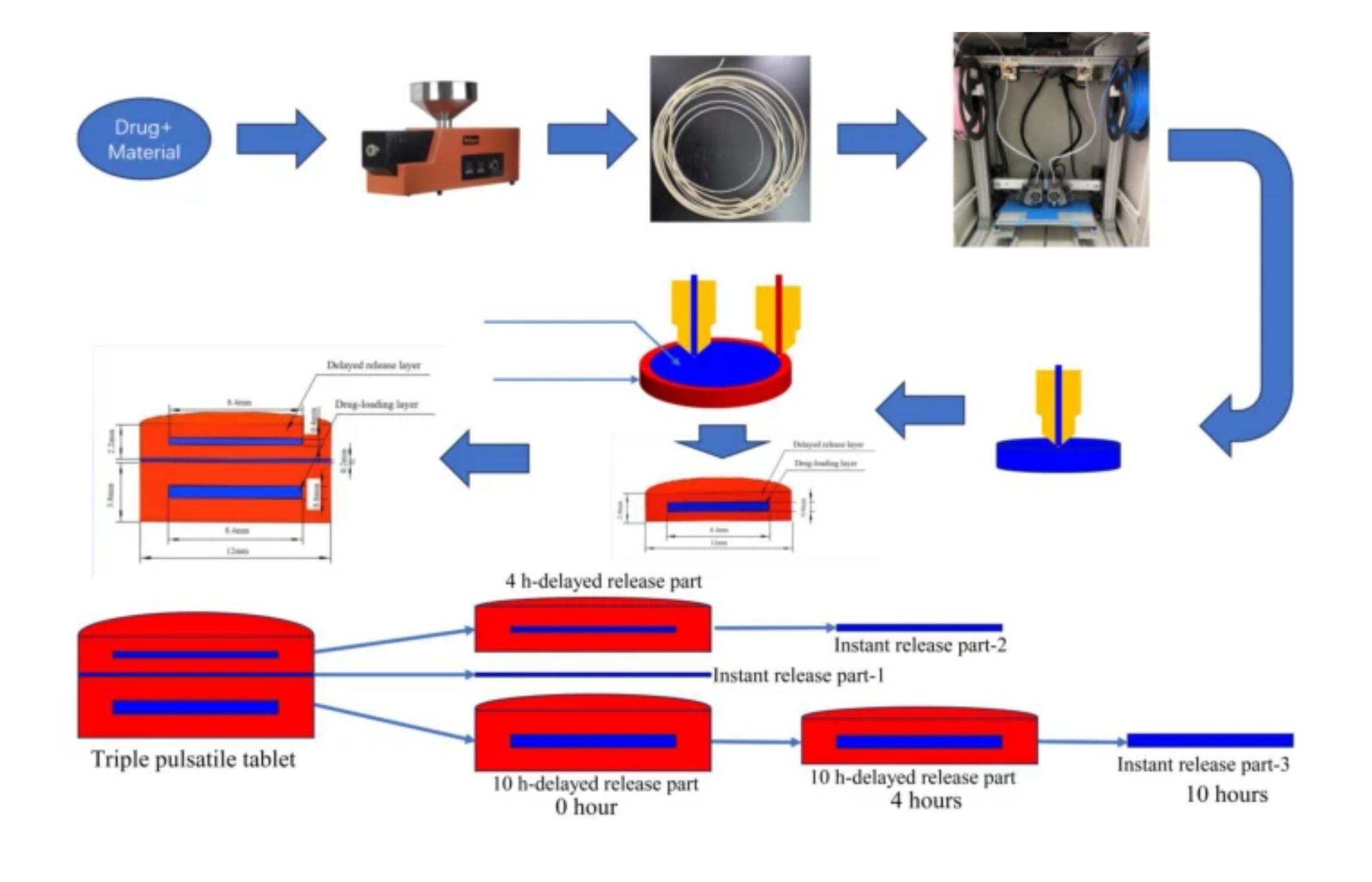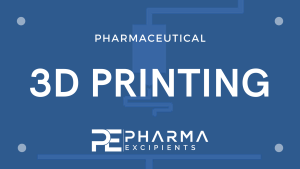Fabrication of 3D-Printed Hydrocortisone Triple Pulsatile Tablet Using Fused Deposition Modelling Technology

Hydrocortisone (HC) is the optimal drug for adolescents diagnosed with congenital adrenal hyperplasia (CAH). Because traditional dosage regimens HC are inconvenient, our study used fused deposition modeling (FDM) three-dimensional (3D) printing technology to solve the problems caused by traditional preparations. First, we designed a core–shell structure tablet with an inner instant release component and an outer delayed release shell. The instant release component was Kollicoat IR: glycerol (GLY): HC = 76.5:13.5:10.
Then, we used Affinisol® HPMC 15LV to realize delayed release. Furthermore, we investigated the relationship between the thickness of the delayed release shell and the delayed release time, and an equation was derived through binomial regression analysis. Based on that equation, a novel triple pulsatile tablet with an innovative structure was devised. The tablet was divided into three components, and the drug was released multiple times at different times. The dose and release rate of the tablets can be adjusted by modifying the infill rate of the printing model.
The results indicated that the triple pulsatile tablet exhibited desirable release behavior in vitro. Moreover, the physicochemical properties of the drug, excipients, filaments, and tablets were characterized. All these results indicate that the FDM 3D printing method is a convenient technique for producing preparations with intricate structures.
Read more here
Chen, H., Zheng, K., Bu, T. et al. Fabrication of 3D-Printed Hydrocortisone Triple Pulsatile Tablet Using Fused Deposition Modelling Technology. AAPS PharmSciTech 25, 58 (2024). https://doi.org/10.1208/s12249-024-02757-2
Read also our introduction article on 3D Printing here:


